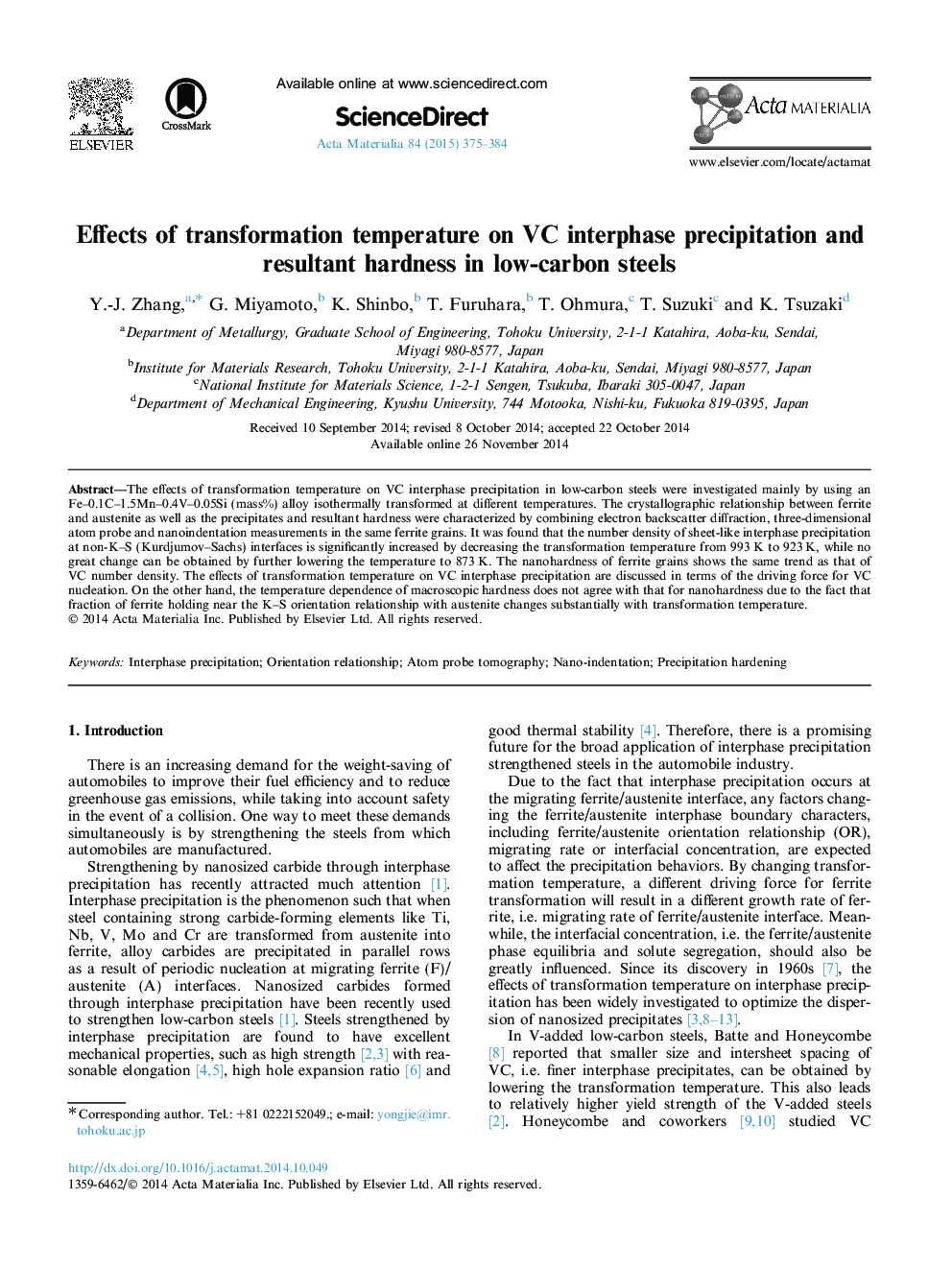| Article ID | Journal | Published Year | Pages | File Type |
|---|---|---|---|---|
| 1445445 | Acta Materialia | 2015 | 10 Pages |
The effects of transformation temperature on VC interphase precipitation in low-carbon steels were investigated mainly by using an Fe–0.1C–1.5Mn–0.4V–0.05Si (mass%) alloy isothermally transformed at different temperatures. The crystallographic relationship between ferrite and austenite as well as the precipitates and resultant hardness were characterized by combining electron backscatter diffraction, three-dimensional atom probe and nanoindentation measurements in the same ferrite grains. It was found that the number density of sheet-like interphase precipitation at non-K–S (Kurdjumov–Sachs) interfaces is significantly increased by decreasing the transformation temperature from 993 K to 923 K, while no great change can be obtained by further lowering the temperature to 873 K. The nanohardness of ferrite grains shows the same trend as that of VC number density. The effects of transformation temperature on VC interphase precipitation are discussed in terms of the driving force for VC nucleation. On the other hand, the temperature dependence of macroscopic hardness does not agree with that for nanohardness due to the fact that fraction of ferrite holding near the K–S orientation relationship with austenite changes substantially with transformation temperature.
